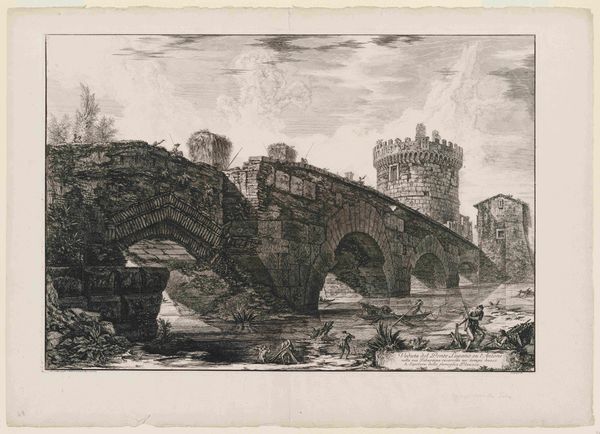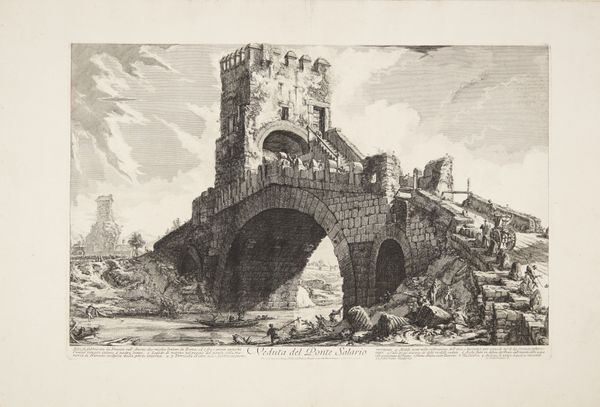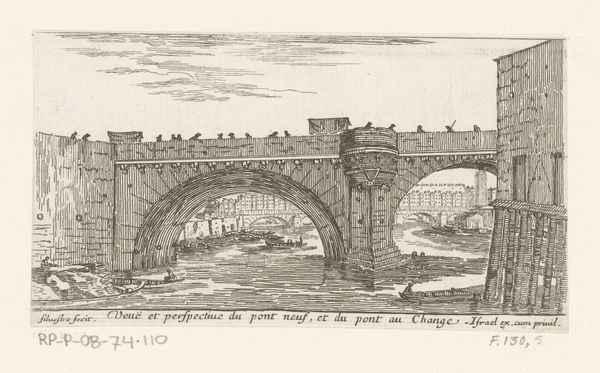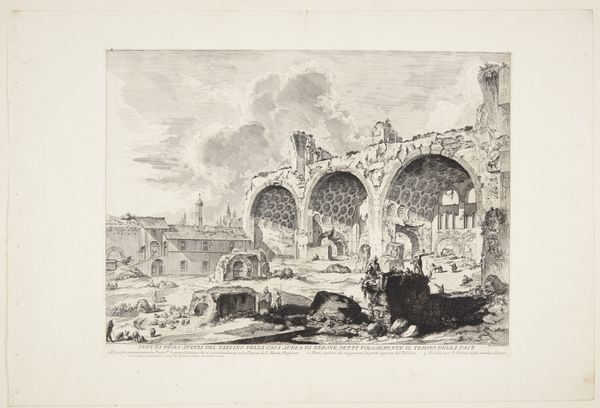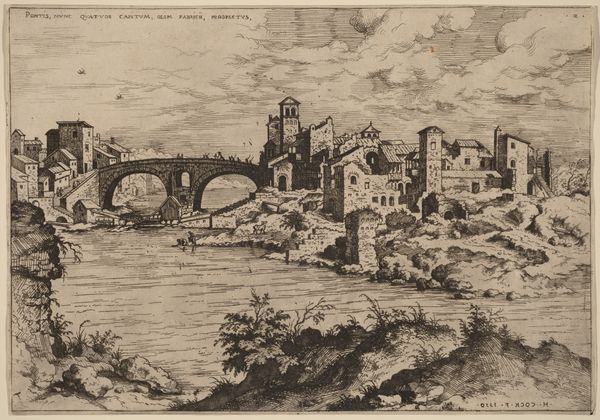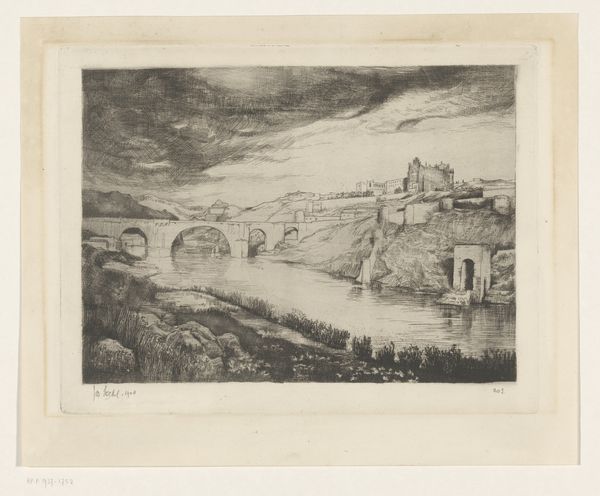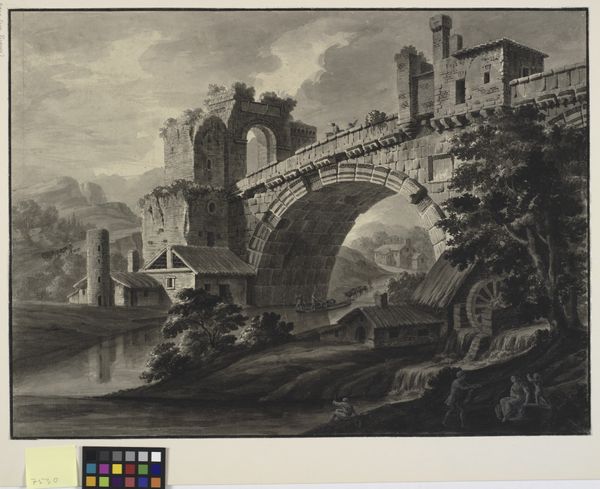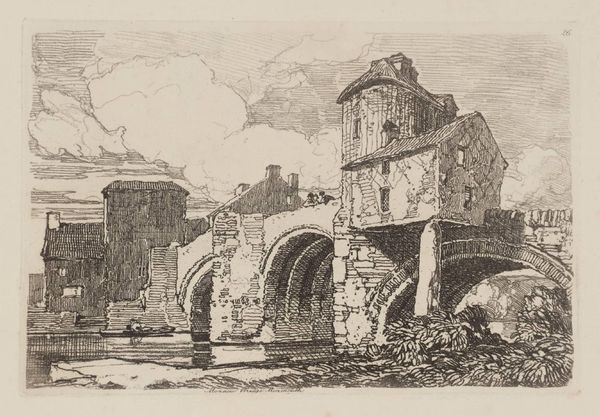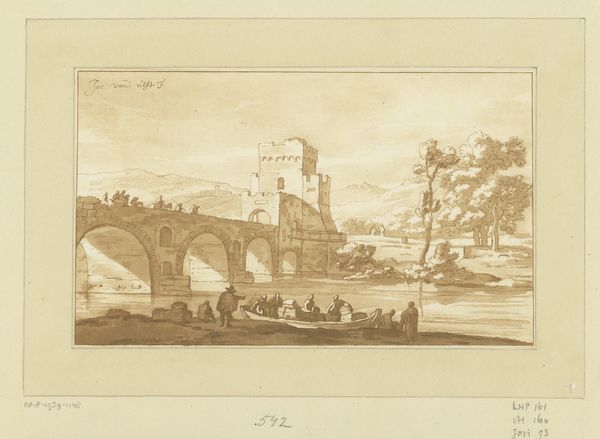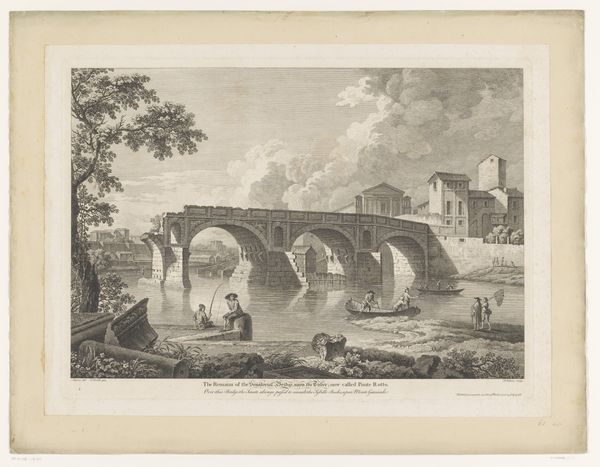
View of the Ponte Lucano on the Anio with the Tomb of the Plautii in the background 1763
0:00
0:00
graphic-art, print, etching, engraving
#
graphic-art
#
neoclacissism
# print
#
etching
#
landscape
#
cityscape
#
engraving
Dimensions: 455 mm (height) x 661 mm (width) (plademaal)
Editor: This is Giovanni Battista Piranesi’s “View of the Ponte Lucano on the Anio with the Tomb of the Plautii in the background,” made in 1763 using etching and engraving. It depicts a decaying bridge and a monumental tomb. I’m struck by the contrast between the imposing architecture and its ruined state, but what really grabs my attention is how humanity, almost like an afterthought, is scattered throughout the landscape. What do you see in this piece? Curator: I see a potent commentary on power, time, and the gaze. Piranesi isn't simply documenting a landscape; he's framing a narrative about the cyclical nature of empires and the enduring presence of ordinary life amidst grand historical narratives. The broken bridge and tomb, once symbols of Roman authority, are now overgrown, merging back into the natural world, occupied by people. Who benefits from this decay, and at what cost? Editor: That’s an interesting point. So you're suggesting Piranesi uses the visual decay not just as aesthetic, but as a statement about power dynamics? Curator: Precisely! The picturesque quality invites us to admire the scene. However, we must also consider how this admiration might blind us to the social realities represented: the lives sustained by the ruins. Who were the Plautii and what actions brought them influence in life? What happened to the subjects represented in the artwork to find them by a dilapidated bridge? Are they resigned to their circumstances, or pushing to rise above them? It becomes an investigation of our relationship with history. Does Neoclassicism provide only beauty, or deeper insight into a world’s complexities? Editor: Wow, I didn't consider the social dynamics. It makes me wonder, what's our role as viewers in perpetuating certain historical narratives by engaging—or not engaging—with these questions? Curator: Exactly! We are invited to question whose stories are being told, whose are being ignored, and the systems of power that enable such selective storytelling. This print reminds us that history is never a neutral record, but a contested terrain, shaped by ideology, social hierarchy, and, most importantly, human agency.
Comments
No comments
Be the first to comment and join the conversation on the ultimate creative platform.
